8.09.2023
NASA’s Psyche Mission on Track for Liftoff Next Month
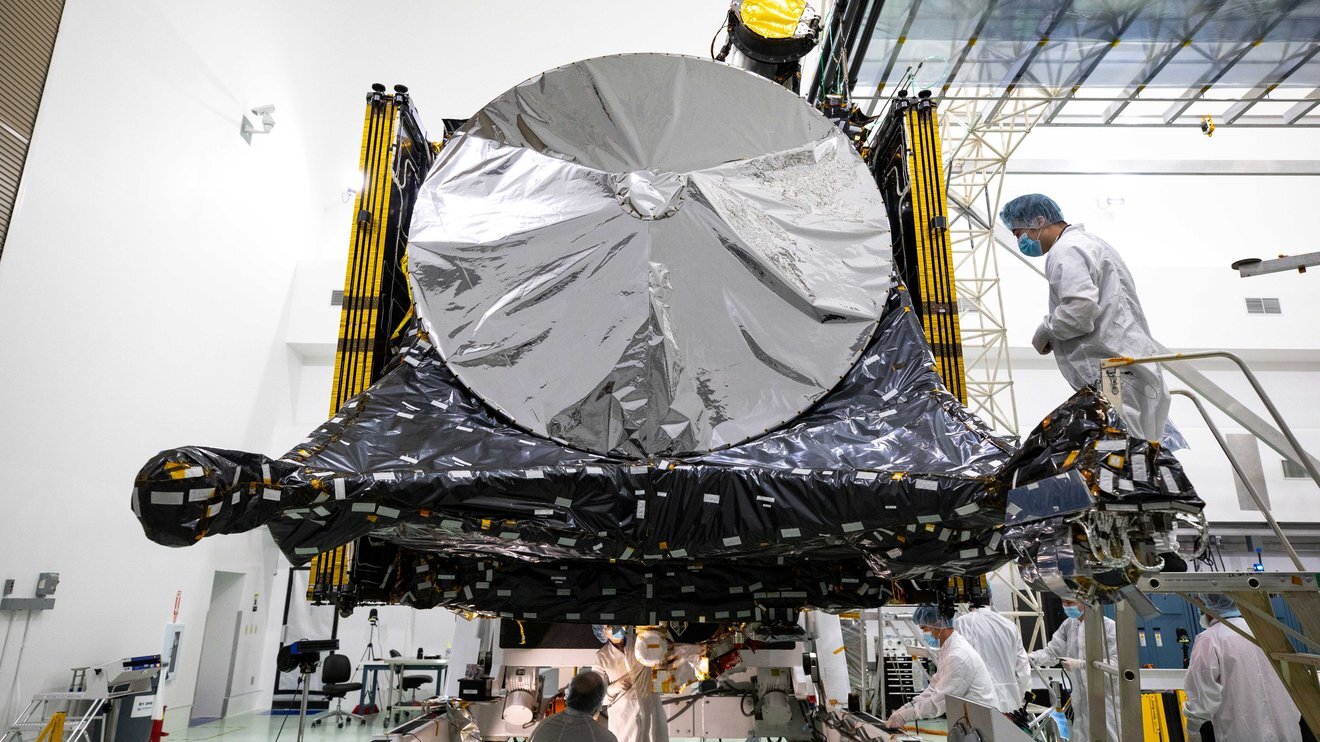
NASA’s Psyche spacecraft will take a spiral path to the asteroid Psyche, as depicted in this graphic, which is labeled with key milestones of the prime mission. The test periods for NASA’s Deep Space Optical Communications (DSOC) technology demonstration are indicated with red dots.
Credit: NASA/JPL-Caltech
Bound for a metal-rich asteroid of the same name, the Psyche mission is targeting Oct. 5 to launch from NASA’s Kennedy Space Center in Florida.
The spacecraft’s solar arrays are folded like an envelope into their stowed position. Xenon gas – fuel for the journey to the asteroid belt – is loaded. All four thrusters have passed their final tests. Engineers have confirmed the massive high-gain antenna is set to transmit data. The software is tested and ready. The science instruments – a multispectral imager, magnetometer, and gamma-ray and neutron spectrometer – that will investigate the asteroid Psyche are poised for action.
NASA’s Psyche spacecraft has less than 30 days to go before the opening of its launch period, which runs from Thursday, Oct. 5 through Wednesday, Oct. 25. What the mission learns from the metal-rich asteroid may tell us more about how planets form.
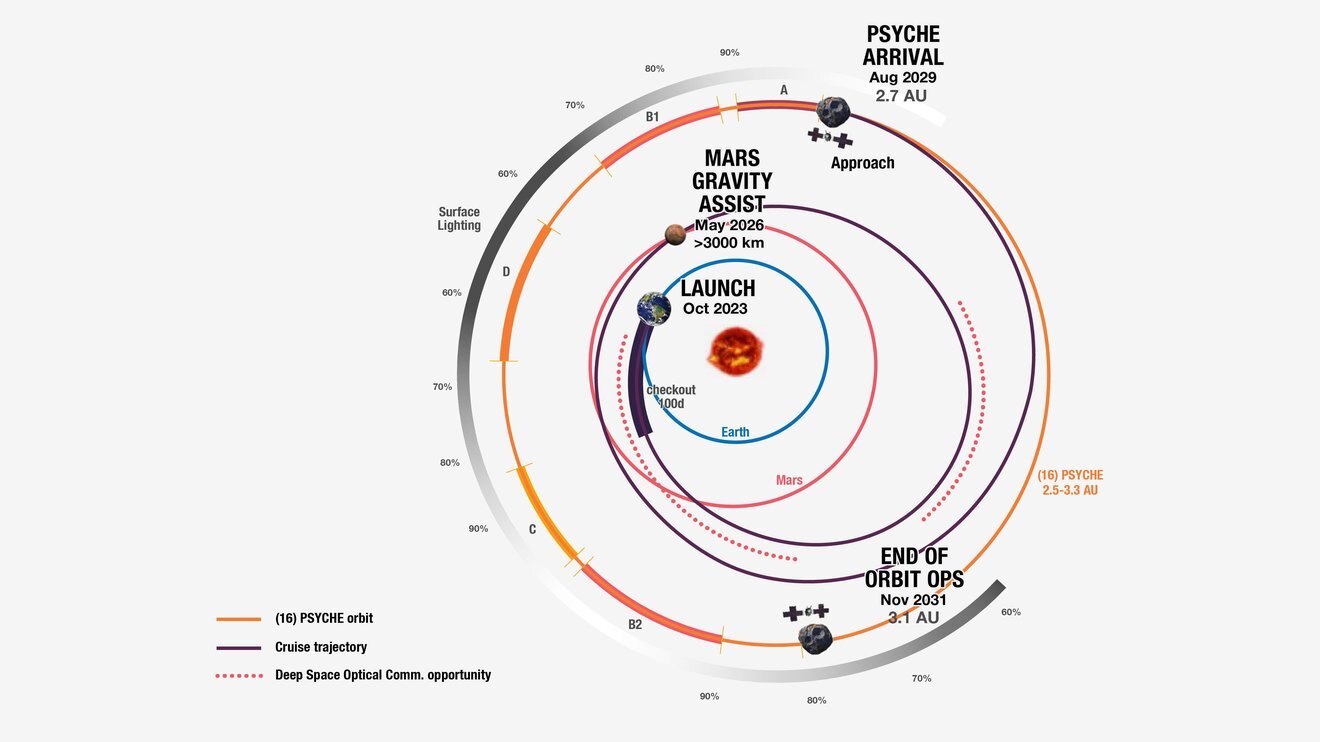
NASA’s Psyche spacecraft will take a spiral path to the asteroid Psyche, as depicted in this graphic, which is labeled with key milestones of the prime mission. The test periods for NASA’s Deep Space Optical Communications (DSOC) technology demonstration are indicated with red dots.
Credit: NASA/JPL-Caltech
“These missions take so many people and so much meticulous, rigorous, personally driven work,” said Lindy Elkins-Tanton, principal investigator for Psyche at Arizona State University. “I am ready to be ecstatic. We all are, but we are not ecstatic yet. Let’s launch and establish communications – then we can scream, jump, and hug each other!”
Within two weeks, technicians will begin encapsulating the spacecraft in its payload fairing – the cone at the top of the rocket – and the spacecraft will move to SpaceX facilities at NASA’s Kennedy Space Center in Florida. Psyche is set to launch atop a SpaceX Falcon Heavy from the center’s Launch Complex 39A at 10:38 a.m. EDT on Oct. 5.
“It’s getting increasingly real,” said Henry Stone, Psyche’s project manager at NASA’s Jet Propulsion Laboratory in Southern California. “We are counting the days. The team is more than ready to send this spacecraft off on its journey, and it’s very exciting.”
After escaping Earth’s gravity, Psyche will use solar electric propulsion to accomplish its six-year journey to the asteroid. The efficient propulsion system works by accelerating and expelling charged atoms, or ions, of the neutral gas xenon – creating a thrust that gently propels the spacecraft with a force akin to what you’d feel holding a single AA battery in your hand. Technicians recently loaded 2,392 pounds (1,085 kilograms) of xenon onto the spacecraft over the course of about two weeks.
Measuring roughly 173 miles (279 kilometers) at its widest point, the asteroid Psyche presents a unique opportunity to explore a metal-rich body that may be part of a core of a planetesimal, the building block of an early planet. Once the spacecraft reaches Psyche in the main asteroid belt between Mars and Jupiter, it will spend about 26 months orbiting the asteroid, gathering images and other data that will tell scientists more about its history and what it is made of.
More About the Mission
Arizona State University leads the Psyche mission. A division of Caltech in Pasadena, JPL is responsible for the mission’s overall management, system engineering, integration and test, and mission operations. Maxar Technologies in Palo Alto, California, provided the high-power solar electric propulsion spacecraft chassis.
A technology demonstration called Deep Space Optical Communications(DSOC) will fly on Psyche in order to test high-data-rate laser communications that could be used by future NASA missions. JPL manages DSOC for the Technology Demonstration Missions program within NASA’s Space Technology Mission Directorate and the Space Communications and Navigation program within the Space Operations Mission Directorate.
Psyche is the 14th mission selected as part of NASA’s Discovery Program, managed by the agency’s Marshall Space Flight Center in Huntsville, Alabama. NASA’s Launch Services Program, based at Kennedy, is managing the launch service.
Quelle: NASA
----
Update: 25.09.2023
.
NASA’s Psyche Moves Toward Liftoff
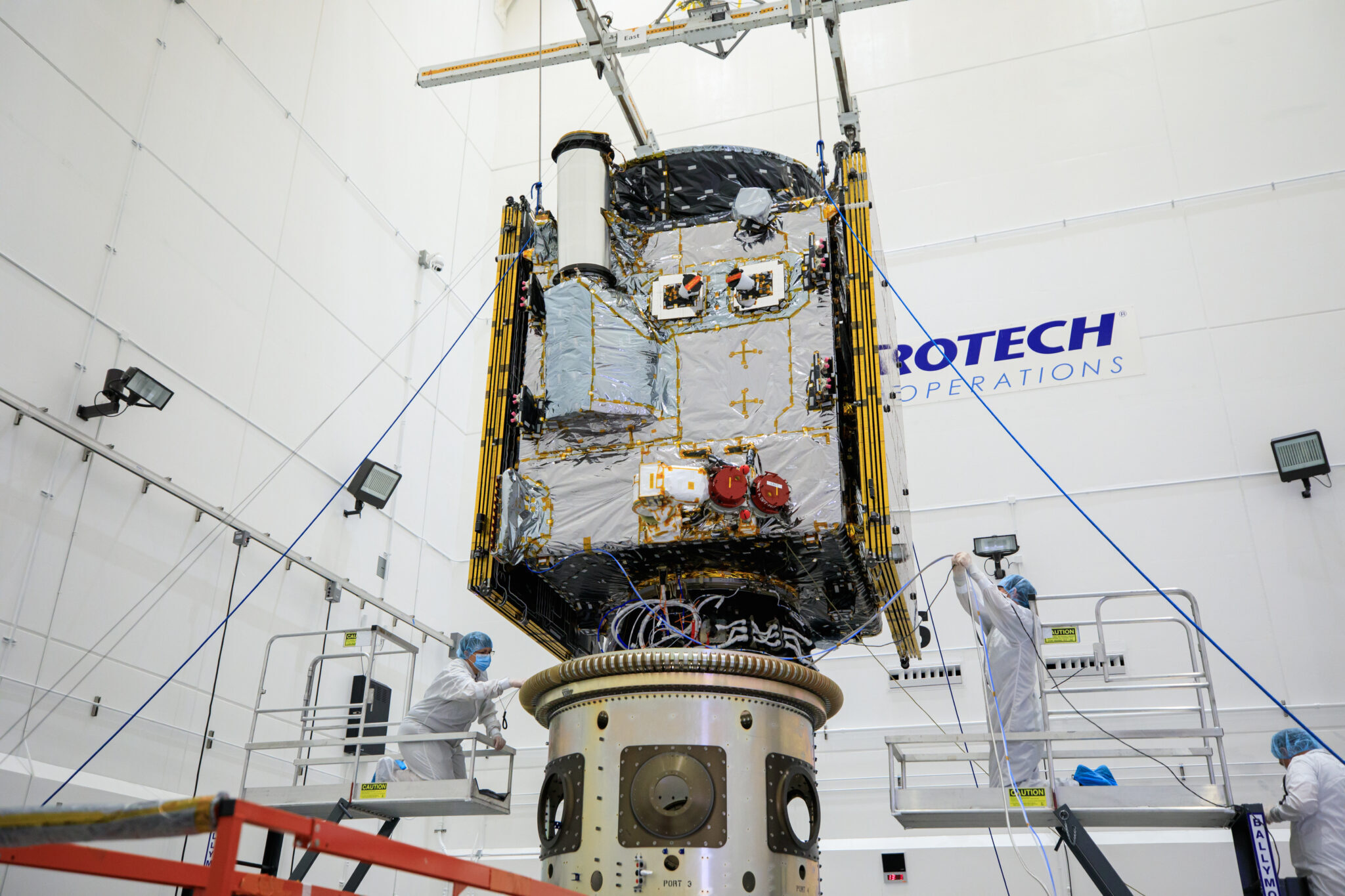
Technicians connect NASA’s Psyche spacecraft to the payload attach fitting inside the clean room at Astrotech Space Operations facility in Titusville, Florida on Wednesday, Sept. 20, 2023. Photo credit: NASA/Kim Shiflett
Now that fueling and testing are complete, NASA’s Psyche spacecraft is ready to meet its ride – a SpaceX Falcon Heavy rocket. Launch is now targeting 10:34 a.m. EDT Thursday, Oct. 5 from Launch Complex 39A at NASA’s Kennedy Space Center in Florida after optimizing the trajectory for the mission to study a metal-rich asteroid.
Technicians connected Psyche to the payload attach fitting at Astrotech Space Operations facility in Titusville, Florida. This hardware allows Psyche to connect to the top of the rocket once it’s secure inside the protective payload fairings.
Psyche’s journey through space will last nearly six years and about 2.2 billion miles (3.6 billion kilometers) before reaching an asteroid of the same name, which is orbiting the Sun between Mars and Jupiter. Scientists believe Psyche could be part of the core of a planetesimal, likely made of iron-nickel metal. The ore will not be mined but studied from orbit in hopes of giving researchers a better idea of what may make up Earth’s core.
Additionally, the Psyche spacecraft will host a pioneering technology demonstration: NASA’s DSOC (Deep Space Optical Communications) experiment. This laser communications system will test high-bandwidth optical communications to Earth for the first two years of Psyche’s journey.
Quelle: NASA
+++
NASA Invites Digital Content Creators to Cover Psyche Launch
Digital content creators are invited to register to attend the launch of NASA’s Psyche spacecraft and create content based on the experience. The Psyche mission will journey to a unique metal-rich asteroid orbiting the Sun between Mars and Jupiter.
Psyche is scheduled to lift off at 10:38 a.m. EDT on Thursday, Oct. 5, on a SpaceX Falcon Heavy rocket from Launch Complex 39A at the agency’s Kennedy Space Center in Florida. NASA’s Launch Services Program is managing the launch.
If your passion is to communicate and engage people online, then this event is for you! Seize the opportunity to see and share the #MissionToPsyche launch. A maximum of 35 social media users will be selected to attend this two-day event (Oct. 4-5, 2023) and will be given access similar to news media.
NASA Social participants will have the opportunity to:
- View a launch of the SpaceX Falcon Heavy rocket
- Tour NASA facilities at Kennedy Space Center
- Meet and interact with Psyche science and engineering experts
- Meet fellow space enthusiasts who are active on social media
NASA Social registration for the Psyche launch opens on Tuesday, Aug. 22, and the deadline to apply is 12 p.m. EDT Monday, Aug. 28. All social applications will be considered on a case-by-case basis.
Quelle: NASA
----
Update: 26.09.2023
.
The eyes of Psyche
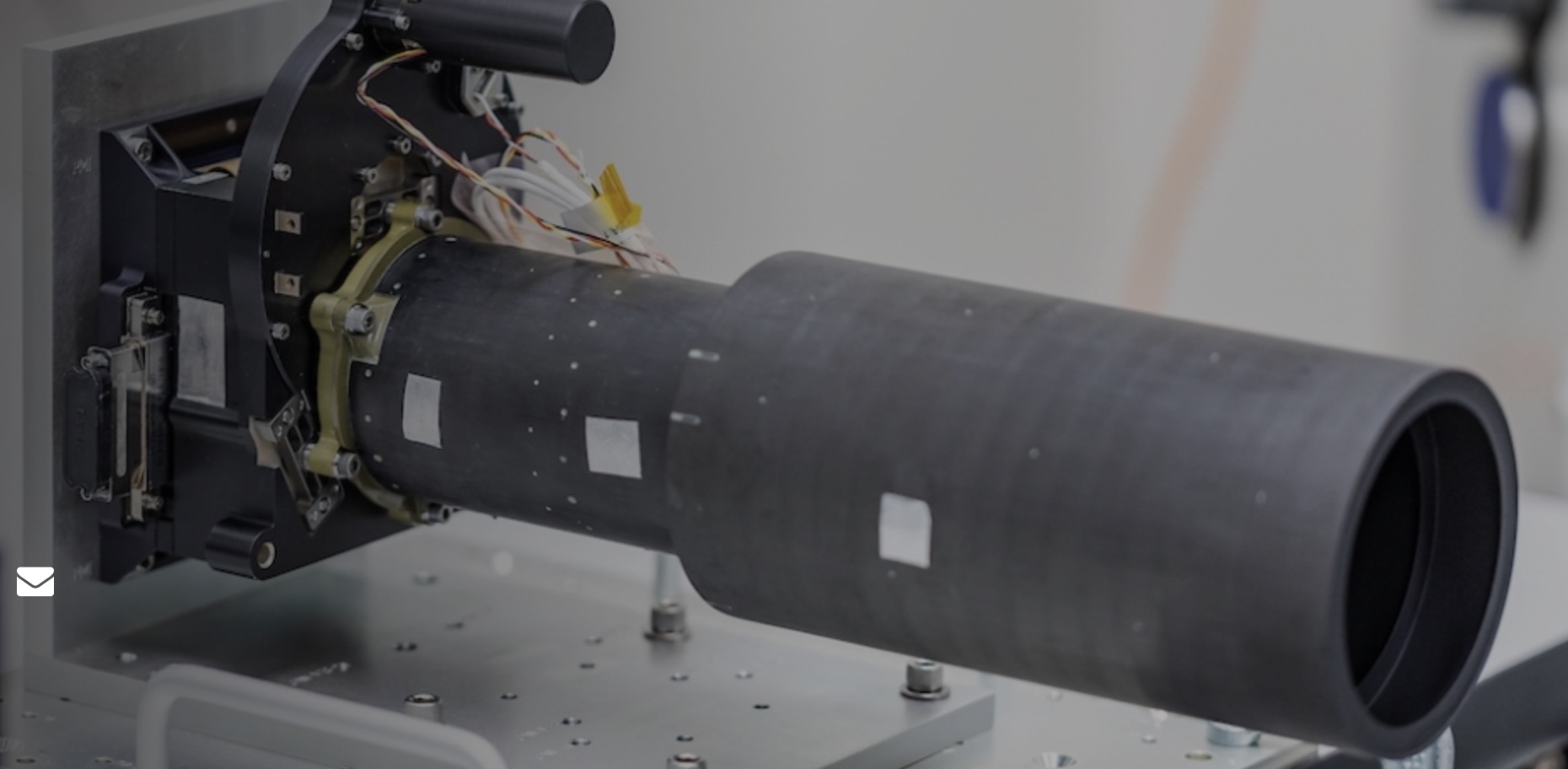

he Psyche spacecraft — on a six-year journey to a metal-rich asteroid of the same name — is scheduled to launch the morning of Oct. 5 from Kennedy Space Center in Florida. Arizona State University is leading the overall mission, as well as the Multispectral Imager instrument team.
The imager will take approximately 85,000 images in the 26 months Psyche will be in orbit around the asteroid, and those images will help determine whether the asteroid is indeed the core of a small planetesimal that formed early in the history of our solar system, as the Psyche team has hypothesized.
“There’s only two cameras on the entire spacecraft,” said Jim Bell, leader of the Multispectral Imager instrument team and a professor in ASU’s School of Earth and Space Exploration. “And we rely on them for operations, for navigation and for science.”
The identical cameras — the redundancy reduces risk — will acquire geologic, compositional and topographic data, and they could help determine the mineralogy of any rocky material that may exist on the surface of the asteroid.
MORE: Psyche news
Taking those images and transmitting them to Earth requires months of planning. Bell said the imager instrument team based at ASU is never in real-time control and contact with the spacecraft.
“We’re not watching it live; we’re not driving it,” Bell said.
Instead, the five instrument teams based around the country — for the Multispectral Imager, the Gamma-Ray and Neutron Spectrometer, the Magnetometer, the Radio Science investigation and the Deep Space Optical Communications technology demonstration — work with NASA’s Jet Propulsion Laboratory and NASA’s Multi-Mission Operations Center to come up with an integrated plan to fit all of the requests into, as Bell said, Psyche’s “resource bucket.”
“We work as a group and do ‘horse trading’ back and forth,” Bell said. “This is all done weeks and months before the activity actually happens.”
That plan — a list of instrument and spacecraft software commands — is then radioed ahead to the spacecraft before it’s required to perform any of its functions.

Jim Bell, leader of the Multispectral Imager instrument team (right) and Malin Space Science Systems camera technician Hakeem Olawale pose for a photo with the first Imager model at Malin Space Science Systems' facility in San Diego. Photo courtesy Jim Bell
Once Psyche begins Orbit A, its high orbit around the asteroid, Bell and his team will spend some time figuring out what they’re looking at through the cameras. That information — they could see craters, ridges, bright spots on the surface, etc. — helps determine the images the spacecraft will take as it orbits closer to the asteroid.
“To use an analogy, think of planning to hike down to the Grand Canyon floor,” Bell said. “You’re going to start up on the rim, look down at the trail and figure out the best way to get down there. … (Once in orbit) we’re going to see what shape the asteroid, instruments and spacecraft are in and take the lay of the land.”
An interesting point: The cameras are made to be tough, due in part to the conditions they will encounter in space.
“What’s really unique about these cameras is … that they are rugged-ized to handle the incredible vibrations and shocks from launch, the hard vacuum environment of space, and the big temperature swings from in the sunlight where it can get quite hot and then in the shadows where it gets really cold,” Bell said.
The Multispectral Imager has the same digital image sensors as the science cameras on the Mars Curiosity and Perseverance rovers. There is a good reason for that. Testing out technology in deep space — where repairs to a robotic spacecraft can’t be made — isn’t a good idea.
“We can’t take risks,” Bell said.
In those 26 months in orbit, Psyche will move from high to low orbits, getting as close as about 75 kilometers (about 47 miles) from the asteroid, Bell said. The data from the images will flow into NASA’s Deep Space Network radio antennas on Earth and then almost immediately to ASU’s Multispectral Imager team.
“The frequency of those image data downlinks could be daily, it could be a couple of times a day, it could end up being less frequent,” Bell said, noting that the spacecraft will also be performing functions at the same time for the other instrument teams. “But hopefully every couple of days we should get a big downlink of hundreds and hundreds of images.”
This is Bell’s 11th robotic mission working with NASA.
“I’ve been hopping around the solar system,” he said with a laugh.
Now his focus will be on an asteroid shaped like a baked potato and approximately the size of the state of Massachusetts — an asteroid whose secrets will be revealed through the photos taken by ASU’s Multispectral Imagers.
About the NASA Psyche mission
The mission is led by Arizona State University. NASA’s Jet Propulsion Laboratory is responsible for the mission’s overall management, system engineering, integration and testing and mission operations. Maxar Technologies delivered the solar electric propulsion chassis, the main body of the spacecraft and most of its engineering hardware systems. NASA's Launch Services Program at Kennedy Space Center manages launch operations.
For more information about the NASA Psyche mission, go to nasa.gov/psyche and psyche.asu.edu.
Top image: The Psyche mission's Multispectral Imager instrument is shown in the process of assembly and testing on Sept. 13, 2021, at Malin Space Science Systems in San Diego. The Multispectral Imager is sensitive to visible light like we can see with our eyes, but also to light just beyond what humans can see, using filters in the ultraviolet and near-infrared wavelengths. The photos taken in these filters will reveal the Psyche asteroid's geology and topography, and could help determine the mineralogy of any rocky material that may exist on the surface of Psyche. Photo by NASA/JPL-Caltech/ASU/MSSS
Quelle: ASU
----
Update: 4.10.2023
.
Clues to Psyche Asteroid’s Metallic Nature Found in SOFIA Data

When the asteroid Psyche has its first close-up with a NASA spacecraft, scientists hypothesize they will find a metal-rich asteroid. It could be part or all of the iron-rich interior of a planetesimal, an early planetary building block, that was stripped of its outer rocky shell as it repeatedly collided with other large bodies during the early formation of the solar system.
New research from scientists at NASA’s Ames Research Center in California’s Silicon Valley suggests that is exactly what the agency’s Psyche mission will find.
Led by Anicia Arredondo, the paper’s first author and a postdoctoral researcher at the Southwest Research Institute in San Antonio, Texas, and Maggie McAdam, Ames research scientist and principal investigator, the team observed Psyche in Feb. 2022 using NASA’s Stratospheric Observatory for Infrared Astronomy (SOFIA). The now-retired observatory was a Boeing 747SP aircraft modified to carry a reflecting telescope. As a flying telescope, SOFIA collected data that was not affected by Earth’s lower atmosphere and made observations from all over the world, including over the oceans.
For the first time, SOFIA was able to gather data from every part of Psyche’s surface. It also allowed the team to collect data about the materials that make up Psyche’s surface – information that could not be gathered from ground-based telescopes.
The Ames team studied the way different wavelengths of light bounce off Psyche. Researchers used a mid-infrared camera, which detects wavelengths in the middle of the electromagnetic spectrum, to observe the asteroid. They measured its emissivity(the amount of energy it radiates) and porosity (how many tiny holes or spaces an object has). Both characteristics can provide clues about the materials that make up an object.
The team observed that Psyche’s emissivity data was mostly flat, meaning there were no spikes or other notable features in its spectra – that is, a chart or a graph that shows the intensity of light the asteroid emits over a range of energies. Similarly flat spectra have been found in laboratory settings when mid-infrared instruments are used on metal objects. This led the researchers to conclude that Psyche is likely a metallic body.
Notably, the team did not observe a spectral feature called the 10-micron plateau, which typically indicates a “fluffy” surface, like lunar regolith. Previous studies of Psyche had observed this feature, which suggests there may be differences between the surface at Psyche’s north pole, which was facing the Earth at the time of the Ames team’s study, and the surface at its south pole, which was the focus of previous studies. The team also proposed that the south pole regolith observed by other researchers could have been ejected from a collision elsewhere on Psyche’s surface. This idea is supported by past observations of Psyche, which found evidence of huge depressions and impact craters across the asteroid.
“With this analysis and the previous studies of Psyche, we have reached the limit of what astronomical observations can teach us about this fascinating asteroid,” said McAdam. “Now we need to physically visit Psyche to study it up close and learn more about what appears to be a very unique planetary body.” NASA’s mission to Psyche will provide that opportunity. The spacecraft is set to launch on Oct. 12, 2023. It will arrive at the asteroid in 2029 and orbit it for at least 26 months.
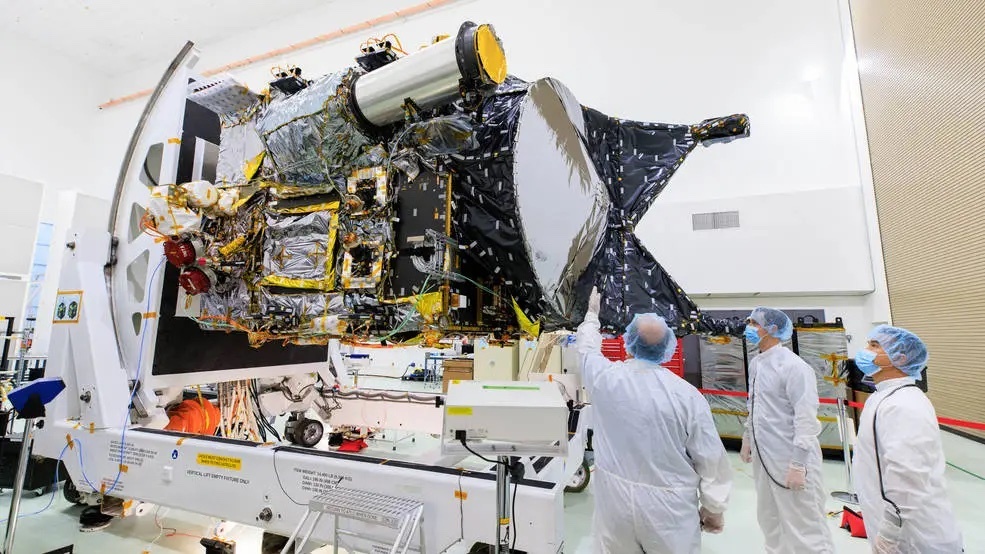
Psyche’s potential to answer many questions about planet formation is a key reason why it was selected for close observation by a spacecraft. Scientists believe that planets like Earth, Mars, and Mercury have metallic cores, but they are buried too far below the planets’ mantles and crusts to see or measure directly. If Psyche is confirmed to be a planetary core, it can help scientists understand what is inside the Earth and other large planetary bodies.
Psyche’s size is also important for advancing scientific understanding of Earth-like planets. It is the largest M-type (metallic) asteroid in our solar system and is long enough to cover the distance from New York City to Baltimore, Maryland. This means Psyche is more likely to show differentiation, which is when the materials inside a planet separate from one another, with the heaviest materials sinking to the middle and forming cores.
“Every time a new study of Psyche is published, it raises more questions,” said Arredondo, who was a postdoctoral researcher at Ames on the SOFIA mission when the Psyche observations were collected. “Our findings suggest the asteroid is very complex and likely holds many other surprises. The possibility of the unexpected is one of the most exciting parts of a mission to study an unexplored body, and we look forward to gaining a more detailed understanding of Psyche’s origins.”
More about the Psyche and SOFIA missions:
Arizona State University leads the Psyche mission. A division of Caltech in Pasadena, JPL is responsible for the mission’s overall management, system engineering, integration and test, and mission operations. Maxar Technologies in Palo Alto, California, provided the high-power solar electric propulsion spacecraft chassis.
Psyche is the 14th mission selected as part of NASA’s Discovery Program, managed by the agency’s Marshall Space Flight Center in Huntsville, Alabama. NASA’s Launch Services Program, based at Kennedy, is managing the launch service.
SOFIA was a joint project of NASA and the German Space Agency at DLR. DLR provided the telescope, scheduled aircraft maintenance, and other support for the mission. NASA’s Ames Research Center in California’s Silicon Valley managed the SOFIA program, science, and mission operations in cooperation with the Universities Space Research Association, headquartered in Columbia, Maryland, and the German SOFIA Institute at the University of Stuttgart. The aircraft was maintained and operated by NASA’s Armstrong Flight Research Center Building 703, in Palmdale, California. SOFIA achieved full operational capability in 2014 and concluded its final science flight on Sept. 29, 2022.
Quelle: NASA
----
Update: 6.10.2023
.
NASA Sets Coverage for Psyche Spacecraft Launch to Metal World
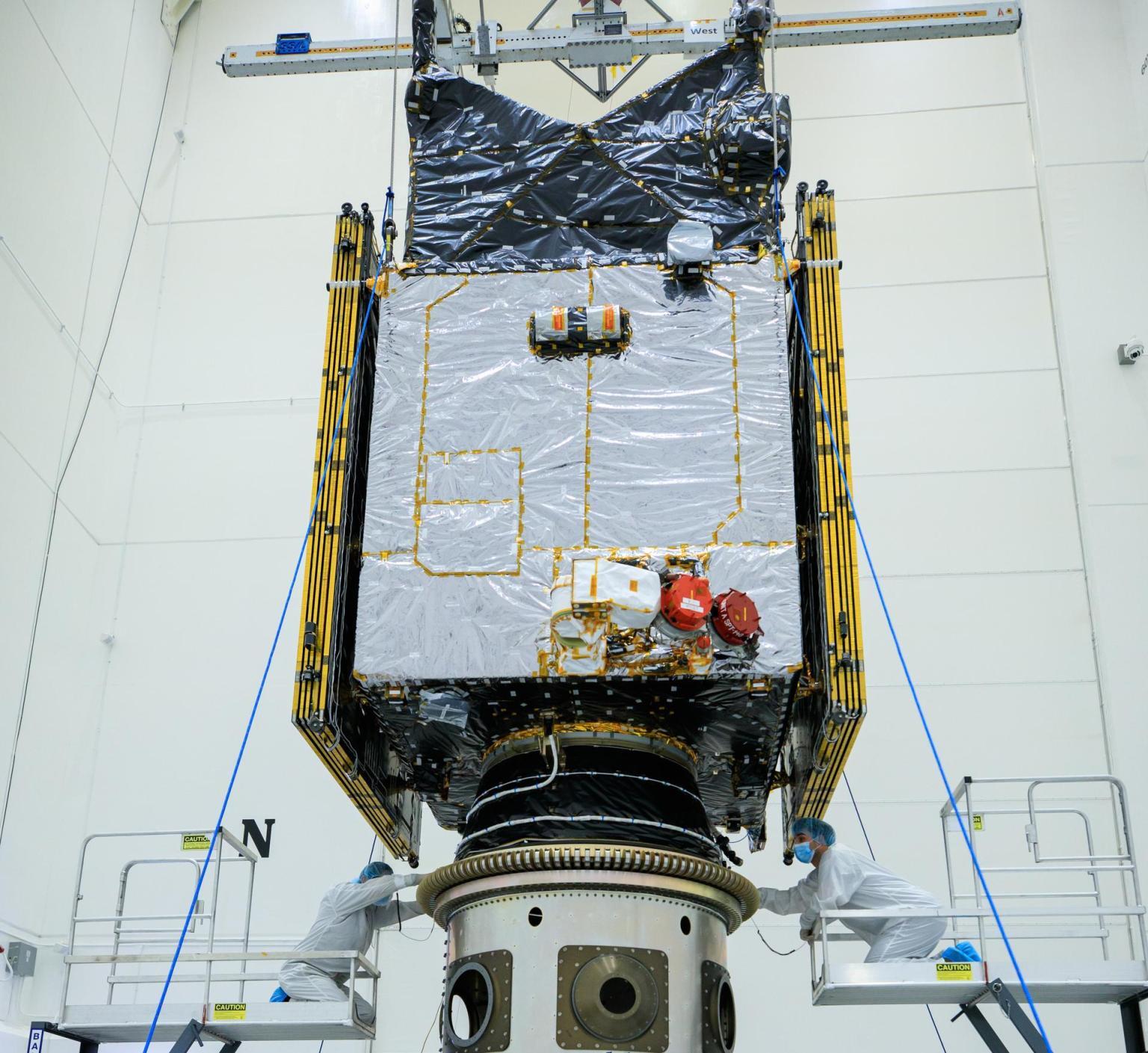
NASA will provide coverage of the upcoming prelaunch and launch activities for its Psyche mission to a metal-rich asteroid. Launch is targeted for 10:16 a.m. EDT Thursday, Oct. 12, on a SpaceX Falcon Heavy rocket from Launch Complex 39A at NASA’s Kennedy Space Center in Florida.
Live launch coverage without commentary will begin at 9:15 a.m. EDT on the NASA Television media channel. The live launch broadcast with commentary will begin at 9:30 a.m., and will air on YouTube, X, Facebook, Twitch, Daily Motion, the NASA app, and the agency’s website. NASA TV’s public channel will be airing coverage of a spacewalk outside the International Space Station.
Prior to launch, NASA will hold a mission and science briefing at 12 p.m. on Tuesday, Oct. 10, and a prelaunch news conference at 1 p.m. on Wednesday, Oct. 11. Watch coverage on NASA TV, the NASA app, and the agency’s website at:
NASA is sending the spacecraft to an asteroid named Psyche, which orbits the Sun between Mars and Jupiter, to learn how Earth and other rocky planets formed. This will be the first mission to an asteroid with substantial amounts of metal, as previous missions have explored asteroids made mostly of rock or ice. The asteroid Psyche may be part of the interior of a planetesimal, a building block of a rocky planet. By studying it, scientists seek to determine whether the asteroid was a planetary core.
Attached to the Psyche spacecraft is a technology demonstration, NASA’s Deep Space Optical Communications. This experiment will test the ability of lasers to transmit data at increased rates beyond the Moon. High-bandwidth optical communications to Earth will be tested during the first two years of the spacecraft’s journey to Psyche. While the optical communications demonstration is hosted by Psyche, its transceiver will not relay Psyche mission data.
Full coverage of this mission is as follows (all times Eastern):
Tuesday, Oct. 10
9:30 a.m. – One-on-one media interviews at Kennedy with various mission subject-matter experts. Sign-up information will be emailed to media accredited to attend this launch in person.
12 p.m. – Psyche Mission and Science Briefing on NASA TV with the following participants:
- Lori Glaze, Planetary Science Division director, NASA Headquarters
- Lindy Elkins-Tanton, Psyche principal investigator, Arizona State University
- Ben Weiss, Psyche deputy principal investigator and magnetometer lead, Massachusetts Institute of Technology
- David Oh, Psyche chief engineer for operations, NASA’s Jet Propulsion Laboratory (JPL)
- Abi Biswas, Deep Space Optical Communications project technologist, JPL
Media may request the news conference dial-in number and passcode by contacting the Kennedy newsroom no later than one hour prior to the start of the call at ksc-newsroom@mail.nasa.gov. Members of the public also may ask questions, which may be answered in real time during the segment, by using #AskNASA on social media. On-site media previously credentialed may attend the briefing in person or via telephone.
Wednesday, Oct. 11
1 p.m. – Psyche Prelaunch News Conference on NASA TV with the following participants:
- NASA Associate Administrator Bob Cabana
- Nicola Fox, associate administrator, NASA’s Science Mission Directorate
- Tim Dunn, senior launch director, NASA’s Launch Services Program
- Julianna Scheiman, director, Civil Satellite Missions, SpaceX
- Henry Stone, Psyche project manager, JPL
- Arlena Moses, launch weather officer, U.S. Space Force
Media may request the news conference dial-in number and passcode by contacting the Kennedy newsroom no later than one hour prior to the start of the call at ksc-newsroom@mail.nasa.gov. Members of the public also may ask questions, which may be answered in real time during the segment, by using #AskNASA on social media. On-site media may attend the briefing in person or via telephone.
2:30 p.m. – NASA Social Panel livestream at Kennedy. Watch live on YouTube and Facebook.
5 p.m. – NASA EDGE will host the Psyche rollout show live on NASA TV and YouTube.
Thursday, Oct. 12
9:15 a.m. – Live launch coverage without commentary begins on NASA TV media channel.
9:30 a.m. – Live launch coverage with commentary begins on YouTube, X, Facebook, Twitch, Daily Motion, the NASA app, and the agency’s website.
For NASA TV downlink information, schedules, and links to streaming video, visit:
NASA Website Launch Coverage
Launch day coverage of NASA’s Psyche mission will be available on the agency’s website. Coverage will include blog updates and livestreaming beginning no earlier than 8 a.m. Streaming video and photos of the launch will be available shortly after liftoff. Images of Psyche’s processing and launch are available online.
Follow countdown coverage on the Psyche launch blog at:
https://blogs.nasa.gov/psyche
Audio Only Coverage
Audio only of the news conferences and launch coverage will be carried on the NASA “V” circuits, which may be accessed by dialing 321-867-1220, -1240, or -7135. On launch day, “mission audio,” countdown activities without NASA TV launch commentary, will be carried on 321-867-7135 beginning at 9:15 a.m.
Attend Launch Virtually
Members of the public can register to attend the Psyche launch virtually. NASA’s virtual guest program for this mission includes curated launch resources, notifications about related opportunities or changes, and a stamp for the agency’s virtual guest passport following a successful launch.
Quelle: NASA
----
Update: 7.10.2023
.
6 Things to Know About NASA’s Asteroid-Exploring Psyche Mission
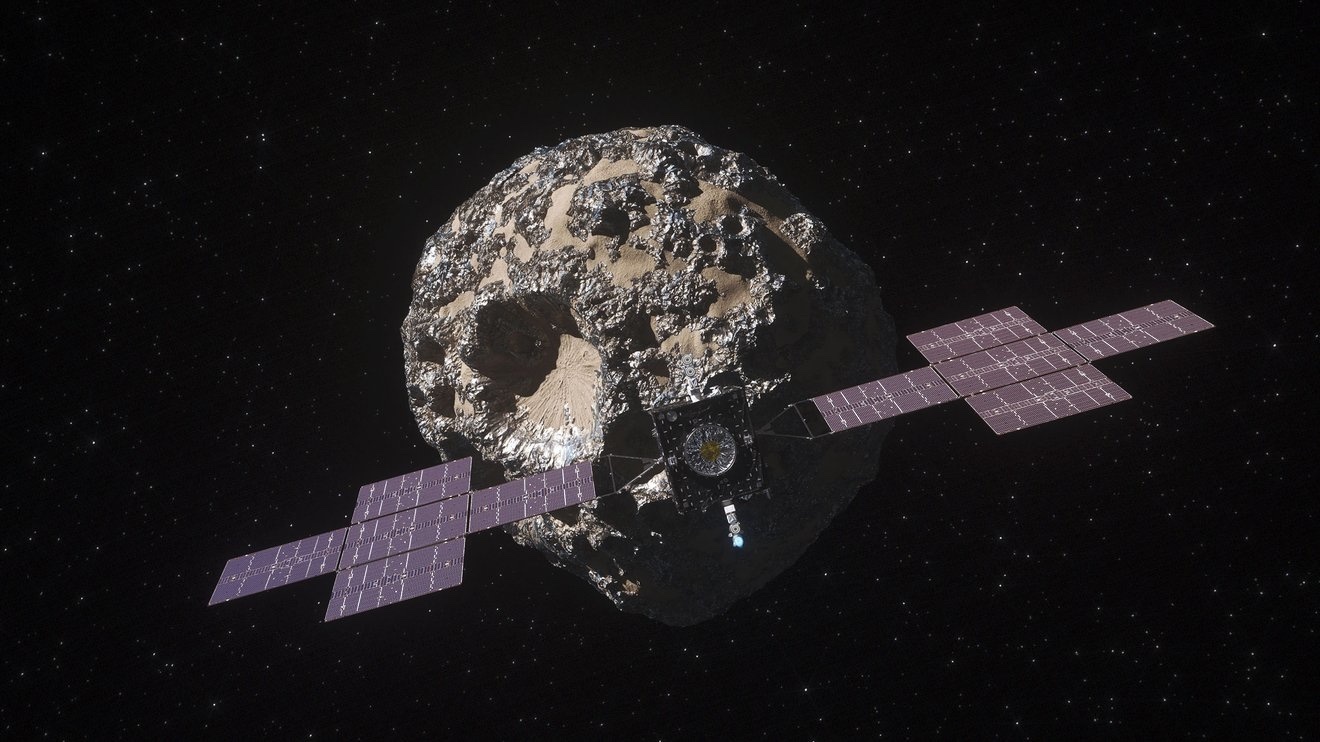
This illustration depicts NASA's Psyche spacecraft as it approaches the asteroid Psyche. Once it arrives in 2029, the spacecraft will orbit the metal-rich asteroid for 26 months while it conducts its science investigation.
Credit: NASA/JPL-Caltech/ASU
The first-ever mission to study a metal-rich asteroid, Psyche aims to help scientists learn more about the formation of rocky bodies in our solar system.
With a launch readiness date set for Thursday, Oct. 12, NASA’s Psyche spacecraft will travel 2.2 billion miles from NASA’s Kennedy Space Center in Florida to a metal-rich asteroid in the far reaches of the main asteroid belt between Mars and Jupiter. Trailing a blue glow from its thrusters and powered by a pair of massive solar arrays, the orbiter will use its payload of science instruments to learn more about the asteroid Psyche.
Here are six things to know about the mission:
1. Learning more about the asteroid Psyche could tell us more about the origins of our solar system.
Based on data obtained by Earth-based radar and optical telescopes, scientists hypothesize that the asteroid Psyche could be part of the metal-rich interior of a planetesimal, a building block of a rocky planet that never formed. Psyche may have collided with other large bodies during its early formation and lost its outer rocky shell. Humans can’t bore a path to Earth’s metal core, so visiting Psyche could provide a one-of-a-kind window into the history of violent collisions and accumulation of matter that created planets like our own.
2. The asteroid could also suggest a different story of how solar system objects formed.
While rocks on Mars, Venus, and Earth are flush with iron oxides, Psyche’s surface doesn’t seem to feature much of these chemical compounds. This suggests that Psyche’s history differs from standard stories of planetary formation.
If the asteroid proves to be leftover core material from a planetary building block, scientists will learn how its history resembles and diverges from that of the rocky planets. And if scientists discover that Psyche is not an exposed core, it may prove to be a never-before-seen kind of primordial solar system object.
3. Three science instruments and a gravity science investigation will help sort out these solar system origin stories and more.
The spacecraft’s magnetometer will look for evidence of an ancient magnetic field at the asteroid Psyche. A residual magnetic field would be strong evidence the asteroid formed from the core of a planetary body.
The orbiter’s gamma-ray and neutron spectrometer will help scientists determine the chemical elements that make up the asteroid – and better understand how it formed.
The spacecraft’s multispectral imager will provide information about the mineral composition of Psyche as well as its topography.
The mission’s science team will harness the telecommunications system to conduct gravity science. By analyzing the radio waves the spacecraft communicates with, scientists can measure how the asteroid Psyche affects the spacecraft’s orbit. That information will help them determine the asteroid’s rotation, mass, and gravity field, offering additional insights into the composition and structure of the asteroid’s interior.
4. The spacecraft will use a very efficient propulsion system for the first time beyond the Moon.
Powered by Hall-effect thrusters, Psyche’s solar electric propulsionsystem harnesses energy from large solar arrays to create electric and magnetic fields. These, in turn, accelerate and expel charged atoms, or ions, of a propellant called xenon (a neutral gas used in car headlights and plasma TVs) at such high speed, it creates thrust. The ionized gas, will emit a sci-fi-like blue glow as it trails behind Psyche in space. Each of Psyche’s four thrusters, which will operate one at a time, exert the same amount of force that you would feel holding three quarters in the palm of your hand. In the frictionless void of space, the spacecraft will slowly and continuously accelerate.
This propulsion system builds on similar technologies used by NASA’s Dawn mission, but Psyche will be the agency’s first mission to use Hall-effect thrusters in deep space.
5. Psyche is a collaboration.
The mission draws on resources and know-how from NASA, universities, and industry. The principal investigator, Lindy Elkins-Tanton, is based at Arizona State University. By enabling collaboration with students nationwide, the partnership offers opportunities to train future instrument and mission leads in science and engineering, and to inspire student projects involving art, entrepreneurship, and innovation. Over a dozen other universities and research institutions are represented on the mission team.
NASA’s Jet Propulsion Laboratory in Southern California manages the mission for the agency’s Science Mission Directorate in Washington. Managed for NASA by Caltech in Pasadena, JPL is also responsible for system engineering, integration and test, and mission operations.
NASA’s Launch Services Program at Kennedy Space Center manages launch operations and procured the SpaceX Falcon Heavy rocket.
Maxar Technologies’ team in Palo Alto, California, delivered the solar electric propulsion chassis – the main body of the spacecraft – and most of its engineering hardware systems.
6. The Psyche mission wants you to be part of the journey, too.
Space exploration is for everyone. The mission’s “get involved” webpage highlights activities and opportunities, including an annual internship for college students to interpret the mission through artistic and other creative works, as well as classroom lessons, craft projects, and videos. Information on how to participate in a virtual launch experience is at nasa.gov/specials/virtualguest/.
The mission websites nasa.gov/psyche and psyche.asu.edu will post official news about the spacecraft’s journey. NASA and ASU will also post regular social media updates on Facebook, Instagram, and X.
NASA’s Eyes on the Solar System, a free web-based 3D visualization tool, will track the location of the spacecraft in real time. Visit go.nasa.gov/45k0OVY to see where Psyche is in the solar system.
About two months after launch, as the team performs an initial checkout of the spacecraft and science instruments, the mission expects to receive its first images. Once the team confirms the imager is functioning as expected, a webpage will feature the unprocessed, or raw, images flowing straight from the spacecraft.
